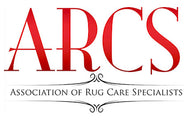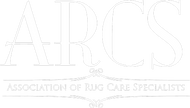
2016/08 - Introduction to Rug Care (Online)
Regular price $0.00INTRODUCTION TO RUG CARE 2016
Date: August 2, 4, 9 & 11 at 3pm EST
Location: Online
ARCS's Introduction to Rug Care course is designed to increase student’s knowledge at a fraction of the cost of other formal education programs. Geared towards employees and those new to the industry, the Introduction to Rug Care course gives students the information they need to make informed cleaning decisions and speak confidently with customers about the cleaning process.
Not simply an online textbook, this is a virtual class in every sense of the word. A live teacher guides a small group of students through the curriculum, answering student’s questions as they arise. Divided into four sessions lasting 80 minutes each, the cleaning process, rug fibers, basic cleaning chemistry and basic rug ID are all presented in ways that everyone can understand. A review test is sent following each session which students may use to evaluate their understanding of the material presented.
Member Price: $150; Non-member Price: $225.
If you have any questions, please contact office@rugcarespecialists.org
Session One – The Cleaning Process
Reviews the basic steps in a “best-practice” rug cleaning, why we do them and some of the most common prevailing methods in application today. While pros and cons of each method are discussed, editorial content is kept out.
- Pre-cleaning Inspection – Why some consider it the most important step in rug cleaning and some of the most common conditions encountered in area rugs.
- Dry soil removal – Why it’s important and ways to do it.
- Washing – From dry cleaning methods to full saturation washing. Each method is discussed covering the why and how as well as the pros and cons.
- Drying – Surveying the most common methods in use today
- Finishing processes – Grooming, browning correction, color correction, etc.
Session Two – Fibers and Chemistry
Covers the basics of the most common fibers and chemicals encountered in area rug care. Topics are discussed generically, avoiding favoritism and bias.
Fibers
- Wool – Why it is the most common rug fiber. How we go from sheep to rug yarn.
- Cotton – Production and application
- Silk – It’s advantages, disadvantages and production
- Bast Fibers – production and uses
- Plastics – Nylon, Olefin, etc.
- Rayon – production and it’s many other names
Chemistry
- Soil – most common types, how they accumulate and implications for cleaning
- Solvents – Polar and Non-polar, volatile and non-volatile and applications for cleaning
- Detergents – what they are and how they work
- The PH scale – What it is, why it’s important and the general PH of specific substances
- Sinner circle
Session Three – Rug ID – Tufted Rugs
A general discussion of tufted rugs and their specific cleaning needs and concerns is followed by a survey of the most common types of tufted rugs encountered, how to identify them and their specific cleaning needs and concerns.
- Tufted rugs – What they are and how they differ from other area rugs
- Tufted rugs made in China
- Tufted rugs made in India
- Custom-tufted rugs
- Machine-tufted rugs
Session Four – Rug ID – Non-tufted rugs
Picks up where we left off. We start with Machine-made rugs and cover how to tell them from hand-made rugs. While hand-made rug ID is not discussed, students are introduced to the basics of where they are made, different construction techniques and the terminology used, building a foundation for future classes. We wrap up with a discussion of some of the most common specialty rugs you will encounter.
- Wilton construction – both traditional and face-to-face variants
- Axminster – both tradition and the Karastan® variants
- Hand-made – piled and non-piled construction, terminology and how to tell them from machine-made rugs
- Specialty rugs – Skins, Shags, craft rugs, etc.




